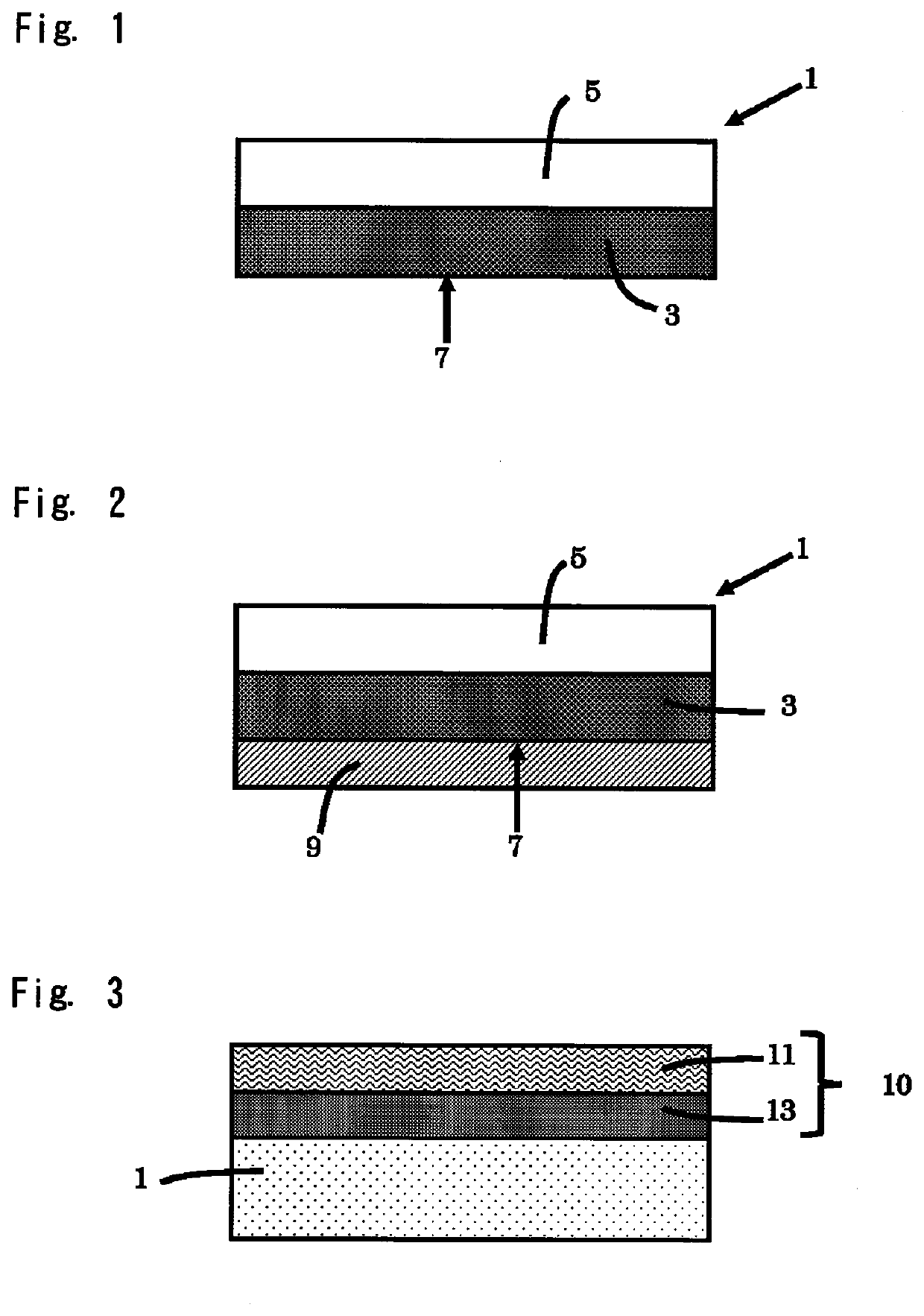Water-absorbing laminated protection film
a protection film and laminate technology, applied in the direction of physical/chemical process catalysts, other chemical processes, separation processes, etc., can solve the problems of water released from the hygroscopic layer not being effectively trapped, not being suited for drying the hygroscopic layer, etc., to achieve excellent hygroscopic capability, water is effectively suppressed, and excellent hygroscopic capability
- Summary
- Abstract
- Description
- Claims
- Application Information
AI Technical Summary
Benefits of technology
Problems solved by technology
Method used
Image
Examples
example 1
[0083]The LDPE was thrown, as the material for forming the surface protection resin layer, into an extruder for forming the surface protection resin layer.
[0084]On the other hand, the CaO-dispersed LLDPE master batch and the LDPE (resin for dilution) were mixed together such that the amount of the CaO was 25 parts by weight per 75 parts by weight of the resin component. The mixture was then thrown, as the material for forming the hygroscopic resin layer, into an extruder for forming the hygroscopic resin layer.
[0085]By co-extruding the surface protection resin layer and the hygroscopic resin layer, there was formed a water-absorbing protection film comprising two layers of the LDPE (surface protection resin layer, 15 μm thick) and the CaO-containing LLDPE layer (hygroscopic resin layer, 30 μm thick).
[0086]The moisture-adjusted PET film was used as the hygroscopic base material. The water-absorbing protection film formed above and the moisture-adjusted PET film (hygroscopic base mate...
example 2
[0087]As the adhesive resin, there was provided a metallocene polyolefin type elastomer (Kernel produced by Japan Polyethylene Co.).
[0088]The co-extrusion forming was carried out in the same manner as in Example 1 but using an extruder for forming an adhesive resin layer in addition to using the extruder for forming the surface protection resin layer and the extruder for forming the hygroscopic resin layer, and throwing the metallocene polyolefin type elastomer into the extruder for forming the adhesive resin layer. There was thus formed a water-absorbing protection film comprising the following three layers.[0089]LDPE layer (surface protection resin layer, 15 μm) / CaO-containing LLDPE layer (hygroscopic resin layer, 30 μm) / metallocene polyolefin type elastomer layer (adhesive resin layer, 15 μm)
[0090]By using the above water-absorbing protection film and the moisture-adjusted PET film (hygroscopic base material), there was prepared a sample for evaluation in the same manner as in Ex...
example 3
[0091]A water-absorbing protection film and a sample for evaluation were prepared by the same method as that of Example 2 but forming the adhesive resin layer in a thickness of 60 μm. The water-absorbing protection film was evaluated for its drying capability. The results were as shown in Tables 1 to 3.
PUM
| Property | Measurement | Unit |
|---|---|---|
| mean primary grain size | aaaaa | aaaaa |
| thickness | aaaaa | aaaaa |
| thickness | aaaaa | aaaaa |
Abstract
Description
Claims
Application Information
 Login to View More
Login to View More - R&D
- Intellectual Property
- Life Sciences
- Materials
- Tech Scout
- Unparalleled Data Quality
- Higher Quality Content
- 60% Fewer Hallucinations
Browse by: Latest US Patents, China's latest patents, Technical Efficacy Thesaurus, Application Domain, Technology Topic, Popular Technical Reports.
© 2025 PatSnap. All rights reserved.Legal|Privacy policy|Modern Slavery Act Transparency Statement|Sitemap|About US| Contact US: help@patsnap.com

